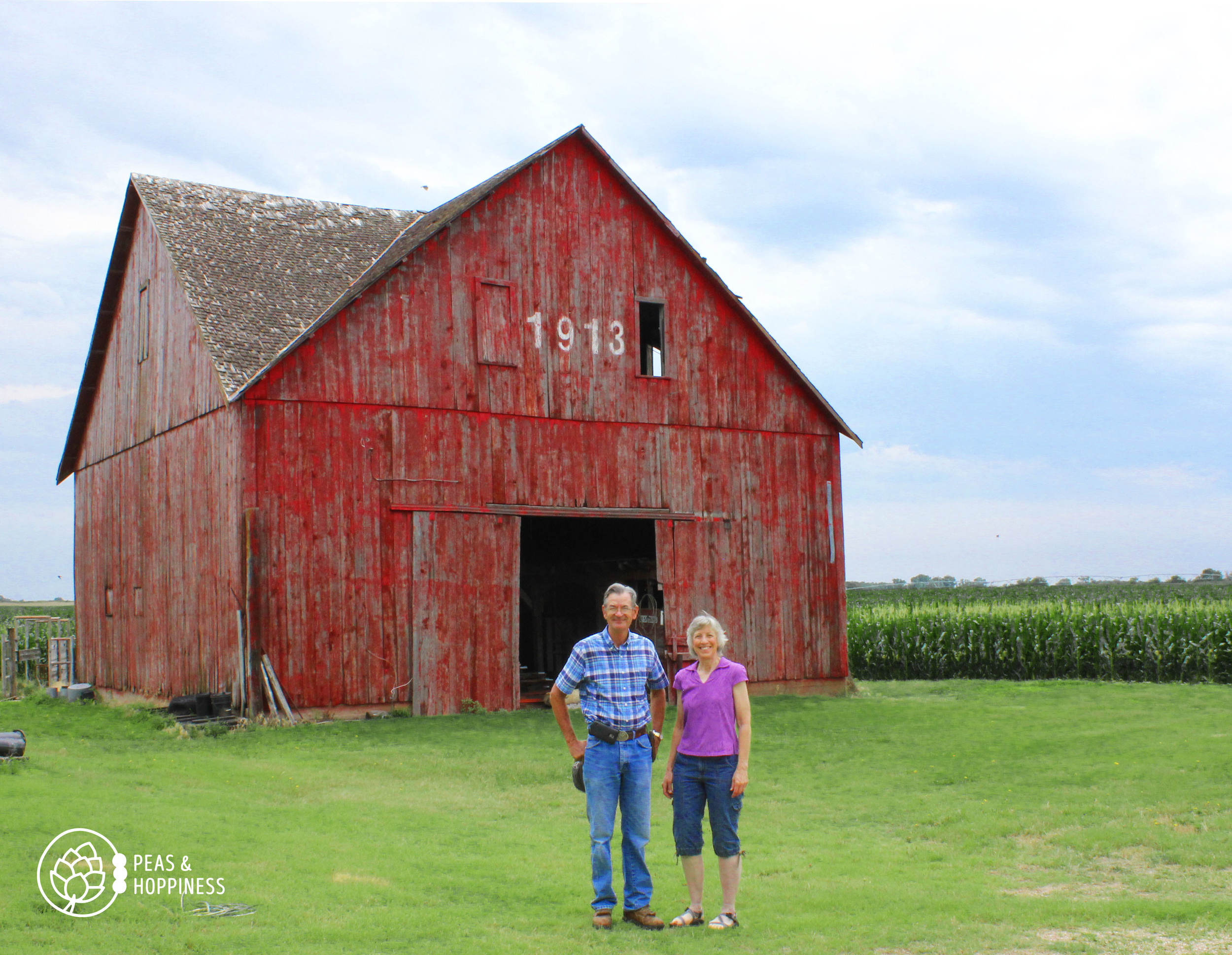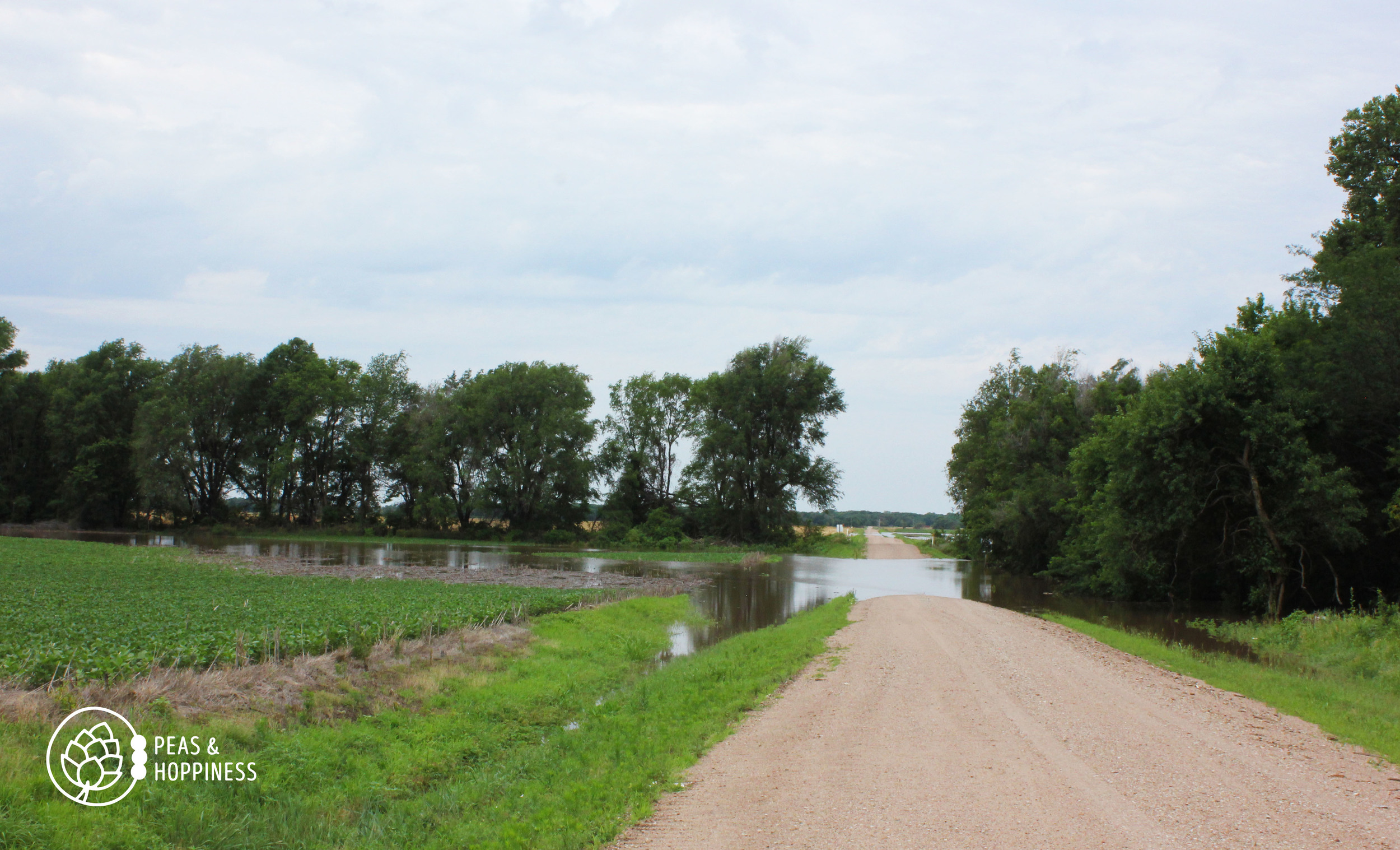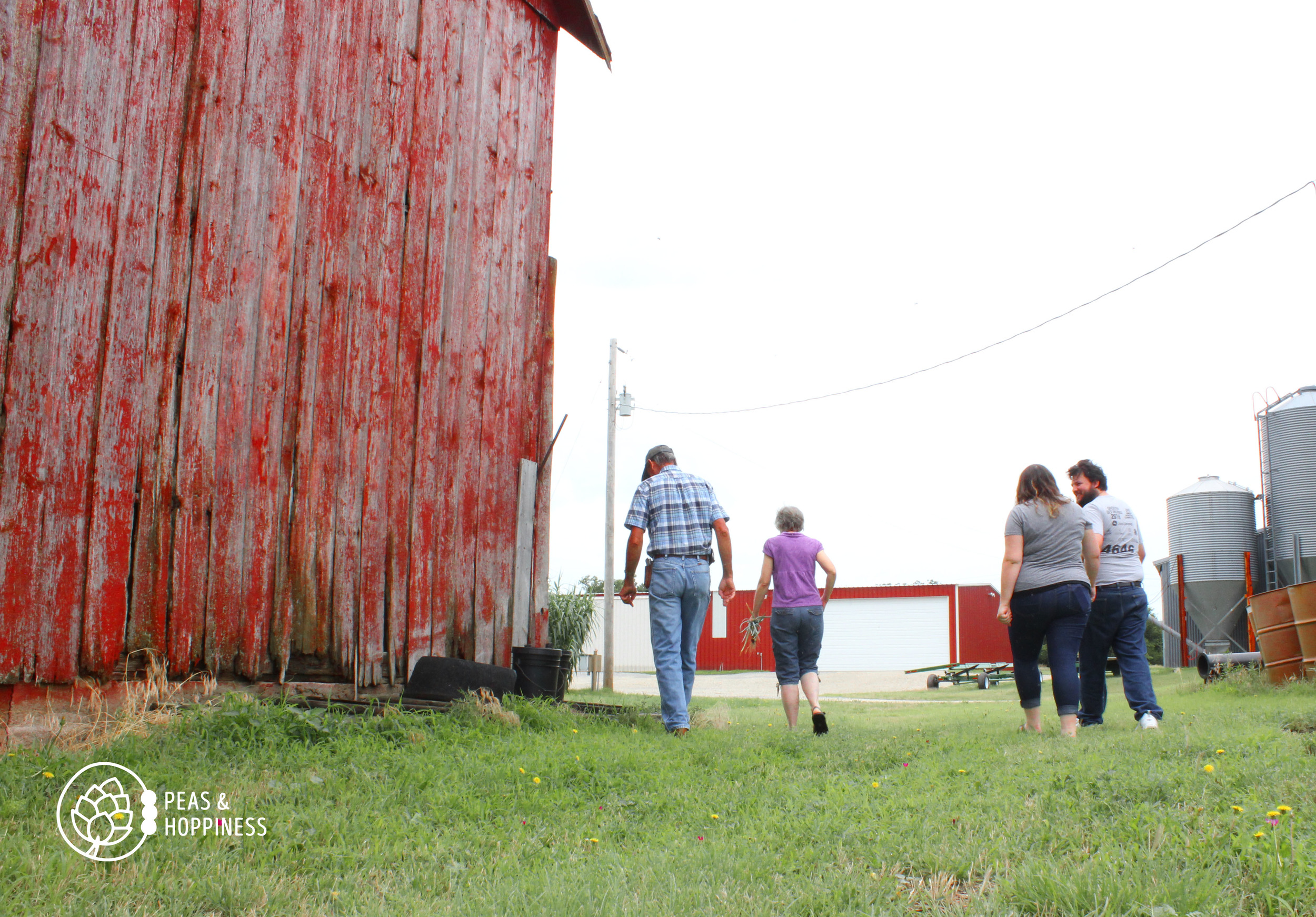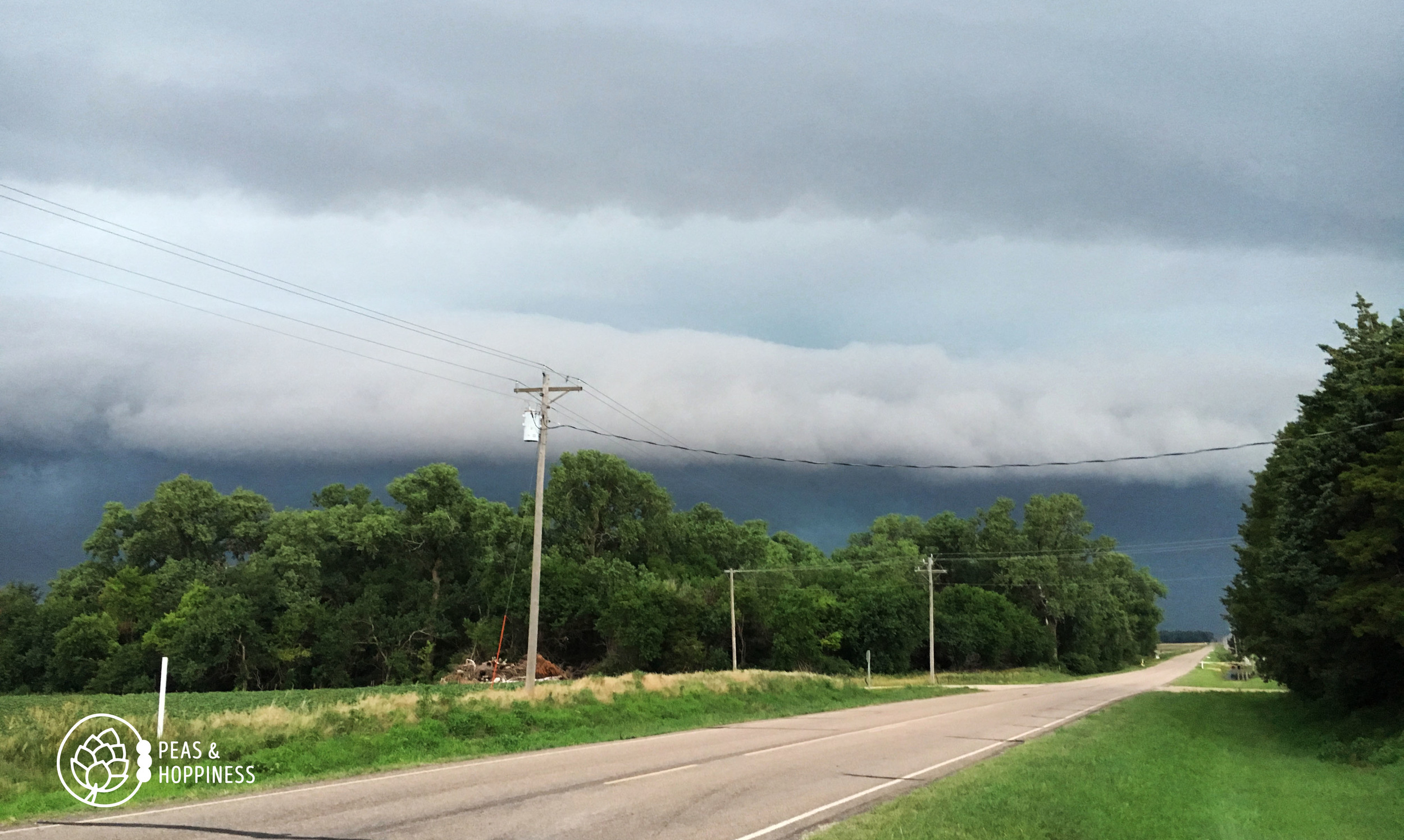For all of the technology in modern agriculture – the GPS device in the combine, the weather app on the phone, the wireless electronic truck scale – our food system is still in the hands of Mother Nature.
It’s never more apparent how small we humans are in the universe until your game of Pegs and Jokers is interrupted by a tornado warning. There is a false sense of security in having a basement; if a tornado were to barrel over the house, there’s really nowhere to hide.

Hiding from the wind and the rain, playing Pegs and Jokers with the family
This is the scary part of being a farmer.
You can plan. You can estimate. You can research and work late nights and get all the planting done on time. But one flood, one hail storm, one extra week without rain can wipe it all away in the blink of an eye. While farming is about knowing how to grow crops in your climate, it’s also about business (knowing when to spend money to make money), relationships (you gotta trust people to work with them), and mitigating risk.
Mitigating Risk
Mitigating risk is something that my parents are so good at, they’ve been asked to sit on an expert panel about the subject in a few weeks. I can hardly do this topic justice, but let me give you a taste of what it means for a farmer to manage risk on the farm.
First, you should know that risk doesn’t go away. We all take risks in life – some are more obvious than others. Taking no risk and sitting still can be, in fact, just as risky as going all-in on your next poker game. If you never take risks, you can never get ahead in life.

Lee and Margaret Scheufler, risk mitigation extrodinaires
Crop Insurance
Purchasing crop insurances is my parents’ first recommendation to mitigate risk. This federal program began in the late 1930s as a response to the Dust Bowl and Depression that wrecked the lives of many farmers in the Mid-West. It was treated as an experimental program for about 40 years, until the Federal Crop Insurance Act of 1980 was passed. The program has undergone many iterations of itself to encourage farmers to utilize Crop Insurance and is reviewed and (so far) renewed every five years when the Farm Bill comes up for renewal.
If you’ve heard that the US government subsidizes agriculture, crop insurance one of the main ways they are doing so. The federal government subsidizes crop insurance if a farmer is signed into the farm program, and they do this to incentivize farmers to mitigate their risk (the Dirty 30s weren’t good for anybody…).

Water, water, everywhere! Flash flooding all across Rice County last weekend
Crop insurance works like this: a farmer chooses the amount he wants to buy into, anywhere from 50-85%, and this is the rate at which his income is guaranteed. The percentage is based on multiplying the historical average yield and the market value at the time of planting so that each farm income is unique. If corn yields an average of 80 bushels per acre in Kansas, a Kansas farmer is not going to magically get a crop insurance return that’s based on an Iowan 120 bushel per acre yield.
To give an example of how this works, let’s assume the following numbers for easy math:
-
Historical average yield = 40 bushels/acre (note: this varies significantly by farm – if your average yield is much lower than this, you’re not going to earn as much from crop insurance)
-
Market value at time of planting = $5.00/bushel (this comes from an average of actual market values for about 30 days prior to planting that year’s crop)
-
Crop insurance buy-in = 75%
40 bushels/acre X $5.00/bushel = $200/acre
75% of $200 = $150
So, if a farmer’s average income per acre is less than $150 either because a) the yield of the field is very low OR b) the price of grain has dropped significantly, crop insurance will kick in and make up the difference so that the farmer is guaranteed that $150 per acre.
If you’re interested in learning more about crop insurance and the farm bill, check out these resources:
History of the Farm Bill
How did the 2014 Farm Bill Change Crop Insurance?
Revenue Protection Crop Insurance

Farm tours with the family, tromping through the wet grass
Crop Rotation
Very simply, crop rotation is the idea of “not putting all your eggs in one basket.”
Dad grows four major crops on his farm: corn, wheat, soybeans, and milo (sorghum). Each of these has a slightly different growing season, so is planted and harvested at a different time. The benefit of this is that if the corn is too wet to cut after a recent rain, Dad can use his “time off” to plant wheat in a nearby field for the following year.
In addition to the efficiency factor, growing a variety of crops means that if soybean prices are unusually low (maybe South America had a bumper crop this year), wheat prices might be up. Fluctuating market prices are a huge factor in the success of a farm and something that has recently been incorporated into the crop insurance algorithm.
To learn more about crop rotation, check out this post I wrote last winter.

Storm clouds rolling in; the tornado’s path was to the north and so missed us. Whew!
Planning Ahead
This unpredictability of weather and markets for a farmer is scary. It means saving money in the good years so that you have something to fall back on in the lean years. This is the reality I grew up with, and it has shaped how I manage my finances today. Because you never know when you might get sick and lose your job – or when a flash flood prevents you from harvesting for so long that the wheat rots in the field and your crop (and income) is destroyed.
For some farmers, planning ahead may mean selling futures when the price is high – meaning contracting the crop at a high price before it’s even been planted, grown, or harvested. It may mean diversifying crops. It might even mean holding a second job just to make sure the bills are paid on time in those years when things are less stable.

Since Dad was rained out of the fields, we took the opportunity to enjoy dinner as a family to celebrate Mom & Dad’s 30th wedding anniversary. They are the best! <3
Farming always has – and always will be – a risky business. Here’s hoping the tornado misses my parents’ house again next time.
With love, from Peas and Hoppiness.